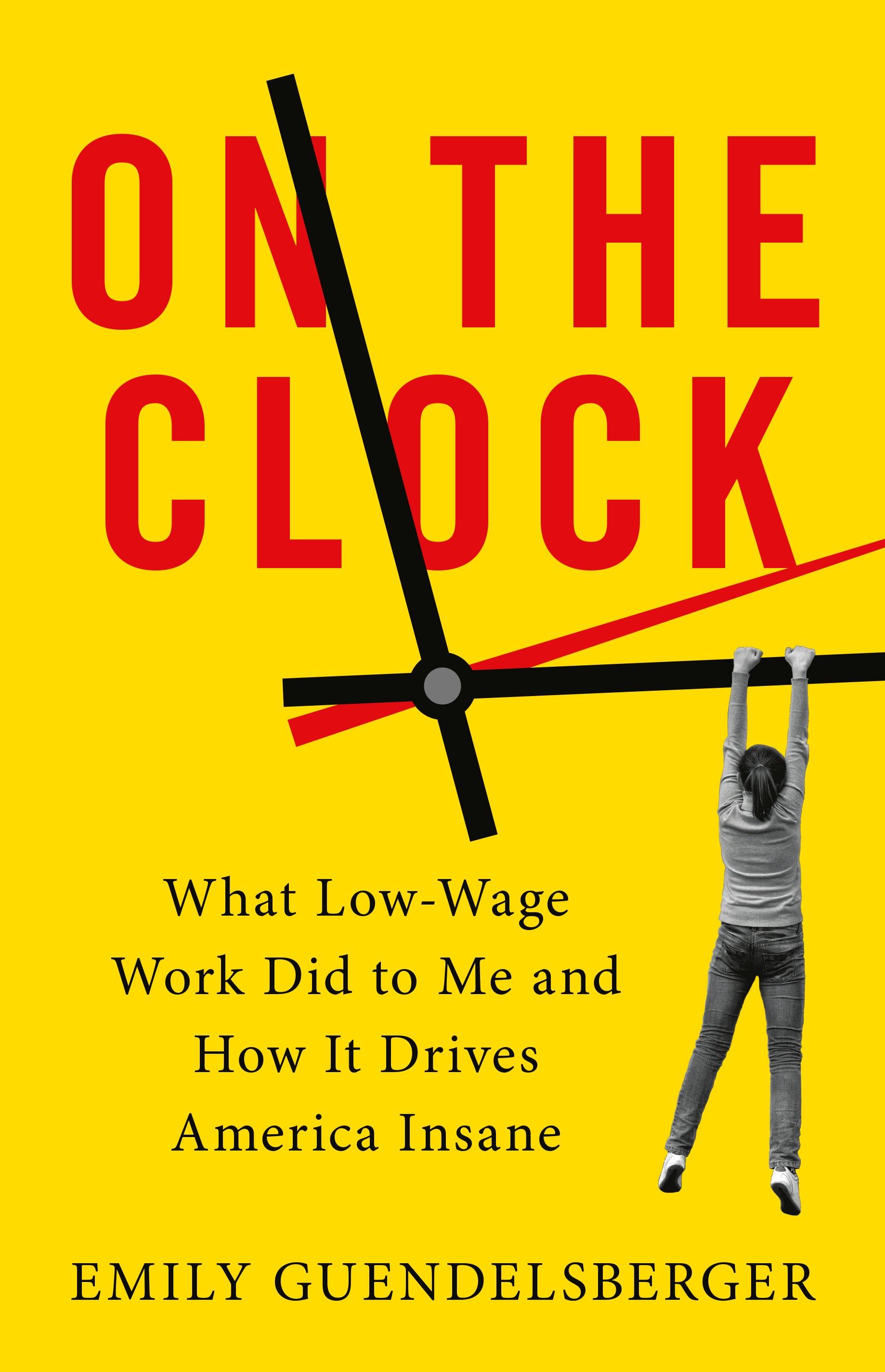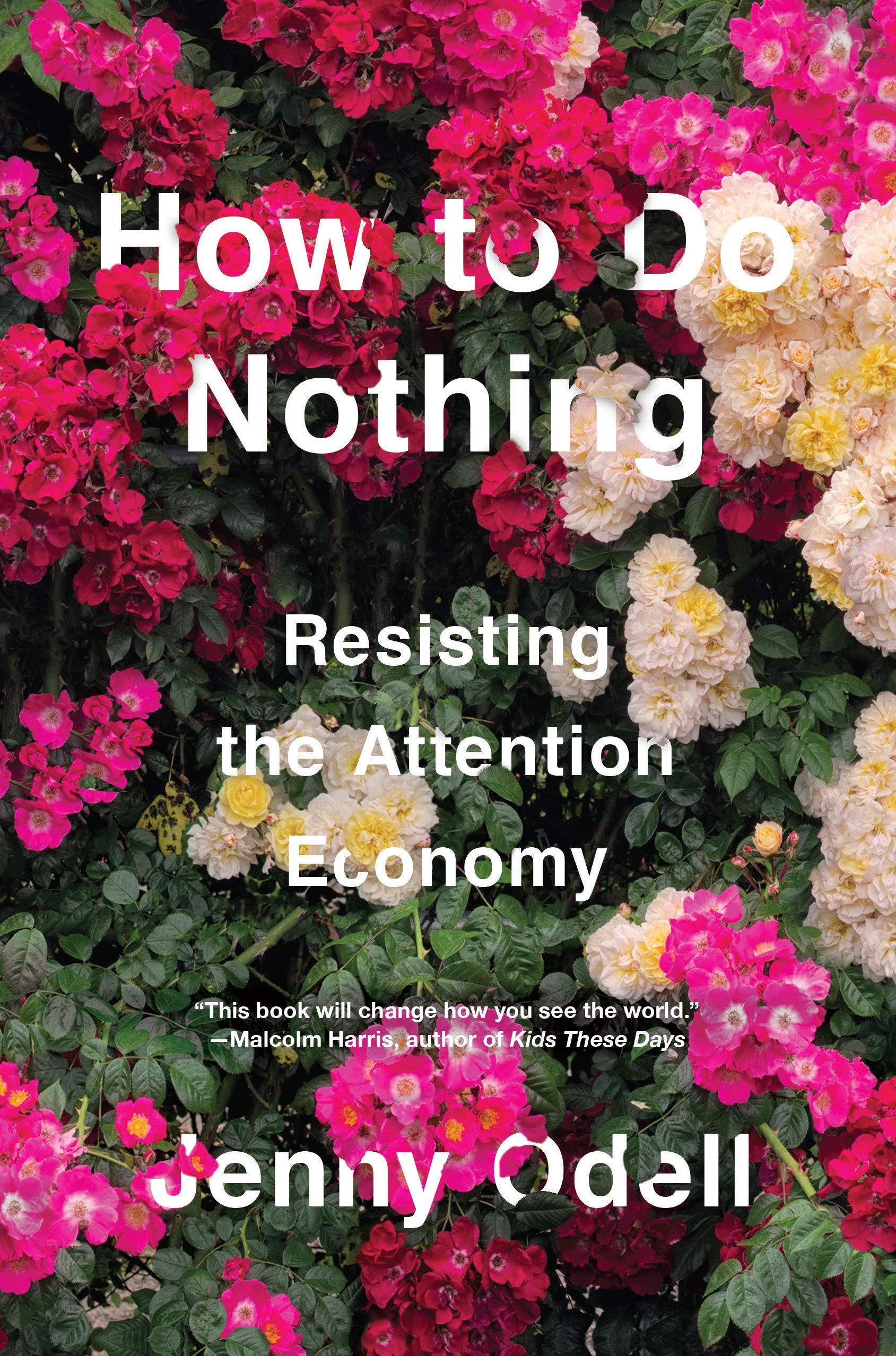According to labor historian E.P. Thompson, pre-industrial societies measured time by task and season. “In Madagascar time might be measured by ‘a rice-cooking’ (about half an hour) or ‘the frying of a locust’ (a moment),” Thompson writes. In 15th-century England, people spoke of a pater noster wyle, the minute or so required to recite the Lord’s Prayer.
With the advent of wage labor, time became money, and was therefore regimented, standardized, and monitored by employers. Two recent books—Emily Guendelsberger’s On the Clock: What Low-Wage Work Did to Me and How It Drives American Insane and Jenny Odell’s How to Do Nothing: Resisting the Attention Economy—explore how we experience time today, as our labor and leisure hours are increasingly minced into monetized pieces.
Guendelsberger’s account is drawn from her year-long stint at three archetypal low-wage workplaces: an Amazon “fulfillment center,” a call center, and a McDonald’s. Like the rest of her co-workers, Guendelsberger spends her days “in the weeds”—a phrase she uses to describe the experience of workers who labor as hard as they can for every minute of a shift.
Workers today are always “in the weeds” because of the rise of surveillance technology, hellish management-dictated productivity demands, and the rise of aggressively lean scheduling; making a Big Mac, as Guendelsberger shows, is now scheduled to the second.
“The weeds are a terribly toxic place for human beings,” she writes. “The weeds make us crazy. The weeds make us sick. The weeds destroy family life. The weeds push people into addiction. The weeds will literally kill you.”
Odell’s book also looks at what she calls the “attention economy,” the corporate-controlled technologies and platforms that “buy and sell our attention” and “enshrine a narrow definition of productivity.” Unlike Guendelsberger, Odell examines this economy from the point of view of people whose labor offers them a certain amount of independence from surveillance, like students, artists, and many white-collar workers. Nevertheless, many of these workers remain “caught up not just in notifications but in a mythology of productivity as progress, unable not only to rest but simply to see where they are.”
Instead of a one-time digital detox, Odell asks readers to do something much harder: to retrain our attention on “the local, the carnal, and the poetic.” Withdrawing our attention from the steady drip of distraction and outrage, and redistributing it to the places and communities we actually live in, Odell argues, is the first step toward ensuring their survival.
Odell fingers social media as the primary technological villain behind what she describes as our collective state of distraction. For most of us, logging into Twitter (say) is a choice. But for the workers Guendelsberger writes about, surveillance is not optional. It’s the fingerprint scanner behind the McDonald’s counter that changes color the minute you are late from lunch. “There is a significant portion of people for whom the project of day-to-day survival leaves no attention for anything else,” Odell writes. They can’t direct their attention away from surveillance technologies without losing their livelihoods.
Odell and Guendelsberger’s books speak to anxiety shared by white-collar and service-sector workers alike, an exhaustion that comes from having machines nag at you all day, alerting you to email or the number of seconds you have to assemble an Amazon order; from understanding that working as hard as you can doesn’t mean that you’ll go home with a decent wage; and from a lack of control over the technology that shapes our moods and days.

(Photo: Little, Brown and Company)
Yet both books also suggest that we have an opportunity to resist the attention economy across class lines. As Odell points out, people have fought for leisure since the early days of this country’s labor movement, pushing for “eight hours of work, eight hours of rest, and eight hours of what we will.”
Both writers argue that the boundaries between different strata of the lower 99 percent of earners are increasingly blurry. Even the Stanford University students Odell teaches feel a staggering need to optimize their time in the hopes of scoring a job after graduation. And automation is already affecting large swathes of jobs, Guendelsberger reminds us—including white-collar ones. In an economy with few safety nets and many disruptions, even those who are secure-ish today may be totally precarious tomorrow.
But there’s still a disquieting sense of class divide between the two books. You can hear it in Odell’s unhurried prose, her dreamy, essayistic style, her impressive knowledge of bird species. “Who has 5,000 seconds to waste on the fucking principle of the thing?” Guendelsberger wonders during her time as a call-center representative, after spending half an hour with a couple determined to understand a $3 charge on their AT&T bill. I can imagine a harried employee thinking the same thing about a person who spends thousands of seconds on a book called How to Do Nothing.
Guendelsberger’s book, in contrast, offers conversational, jokey, and emphatic takeaways, chunks of argument and information that make the reader come away feeling as if they have done something. She’s made an effort to write accessibly for the rushed reader, though sometimes at the cost of making a more careful and historically grounded argument.
Both books argue that the attention economy is bad for our democracy, but on different grounds.
Odell thinks that the frenzied pace of social media precludes the time and space needed for durable, solidarity-building conversations. Guendelsberger argues that workers are embracing strongman leaders like President Donald Trump because their jobs are so stressful. “Chronic stress drains people’s empathy, patience, and tolerance for new things,” she explains, and makes Trump’s racist and misogynistic rhetoric more attractive.
Like a frustrating number of journalists, Guendelsberger elides the difference between “working class” and the white working class. Black and Latinx people, overrepresented in low-wage jobs, didn’t embrace Trump. In fact, as Malaika Jabali writes in her essay “The Color of Economic Anxiety,” part of the reason Democrats lost in key states like Wisconsin was because voters of color stayed home—a phenomenon Guendelsberger declines to investigate.
Labor history pours a glass of cold water on Guendelsberger’s distressingly sunny, attitude-driven theory of change in the labor market. She advises her readers to just start talking to people about the better world we want to see, and to work with those people to make it real. “You’ll become part of something bigger than yourself,” she predicts. “And slowly but surely, you’ll start feeling like a human being again. You’ll know what to do from there.”
Will we? Organizing is hard. Since the rise of modern wage labor, workers trying to reclaim their time have been rounded up, bombed, massacred, beaten, fired, and deported. There are legal and tactical hurdles, and constraints on people’s time and energy—especially among the kind of workers Guendelsberger writes about.
Her book barely acknowledges the organizing being done by low-wage workers to win a $15 an hour minimum wage and fight sexual harassment, and doesn’t delve into any lessons activists have learned from those campaigns. Instead of suggesting that readers support existing worker-centered projects, she offers them a blank slate on which to scribble utopias.

(Photo: Melville House)
Guendelsberger argues that low-wage workers are politically disengaged because they have low levels of control over difficult lives. She compares them to caged rats subjected to random shocks. The rat’s life “has been nothing but unpredictable, inescapable suffering, and it’s crippled her capacity to imagine anything better.” She is incapable of climbing into the part of the cage without a shocked floor, like a worker too gun-shy to join a union drive.
This analogy suggests that freedom is just a short clamber away—all you have to do is choose it. The journey will be “annoying but not impossible,” a phrase that could describe a trip to IKEA. It’s a vision that defies the history of labor organizing and most civil rights organizing in this country. People have struggled continually to win better lives. We will never be done, and a better world is certainly not a short jump away.
Odell’s political conclusions are more measured and more informed by ecological consciousness. Today, that means an awareness of already-unfolding environmental disasters. She asks readers to nourish what persists in that “small crack in the continuum of catastrophe”: the parts of the natural world, our cities, and ourselves that have not yet been colonized by the logic of productivity.
This vision is rooted in the realities of organizing and the history of the Bay Area, where Odell grew up and still lives. A lover of Oakland’s green spaces, she writes that each represents a victory against the forces of gentrification and urban “progress.”
They also serve as a reminder of how rare those victories are. We’ve given much more of the city to condos than to rose gardens, she writes, and these fragile spaces need constant defending. “When the logic of capitalist productivity threatens both endangered life and endangered ideas,” she writes, “I see little difference between habitat restoration in the traditional sense and restoring habitats for human thought.”
Both Odell and Guendelsberger’s books describe life during end-stage capitalism. We live in a scavenger economy: Companies extract trace amounts of crude oil from sands, use predatory capital to replace jobs with gigs, and squeeze extra labor from the minutest fragments of our time and attention. Their top-line growth stays satisfactory, at a continually rising human cost.
It may be that to have a future at all—to get beyond the hysterical present of the attention economy—we’ll need an entirely new relationship to time, one forged in spite of overt corporate opposition. With luck, one day everything I’ve described will seem as foreign as a pater noster wyle.

Pacific Standard’s Ideas section is your destination for idea-driven features, voracious culture coverage, sharp opinion, and enlightening conversation. Help us shape our ongoing coverage by responding to a short reader survey.





